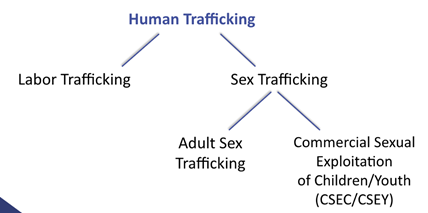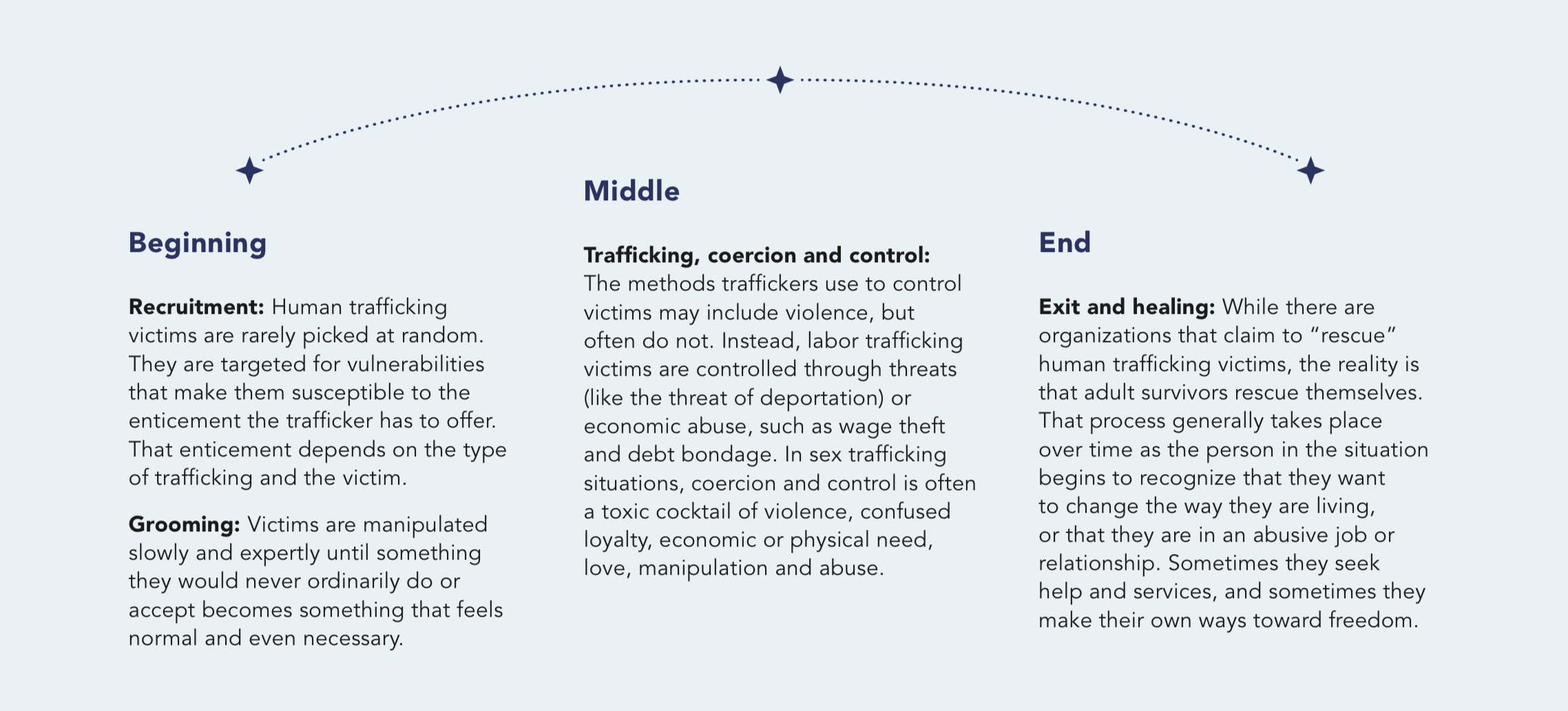SEX TRAFFICKING
“It took me 10 years to realize: Hey. Wow. I was trafficked, because my situation was so different from what I had seen represented as trafficking."
-Survivor of trafficking

Human Trafficking Defined
In the US, the Trafficking Victims Protection Act of 2000 (TVPA) has defined human trafficking as:
Sex trafficking: the recruitment, harboring, transportation, provision, obtaining, patronizing, or soliciting of a person for the purpose of a commercial sex act, in which the commercial sex act is induced by force, fraud, or coercion, or in which the person induced to perform such act has not attained 18 years of age
Labor trafficking: the recruitment, harboring, transportation, provision, or obtaining of a person for labor or services, through the use of force, fraud, or coercion for the purpose of subjection to involuntary servitude, peonage, debt bondage, or slavery.
A victim need not be physically transported from one location to another for the crime to fall within these definitions.
The Trafficking Story Arc (from Polaris)
Unlike murder, or robbery, human trafficking is not a single event that happens at one specific moment in time. Trafficking occurs through a series of activities that take place over time, throughout the course of a day, for months or even years.
Like any traditional, linear narrative, the story of every sex and labor situation has a beginning, a middle and – we hope – an end. The beginning and middle tend to follow fairly common patterns. How trafficking ends is as unique as the resilient survivors who manage to find their ways to freedom.

Why Don't They Just Leave?
In many cases, people in sex trafficking situations do not see themselves as victims while they are being trafficked. They have been so expertly manipulated or “groomed” that they believe they are making their own choice to engage in commercial sex. These emotional ties are as powerful as being held in handcuffs or behind bars. People in sex trafficking situations may well also depend on their traffickers for physical needs like money or shelter. They may face threats against them or their families or violence if they complain or try to leave.


